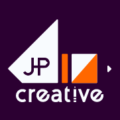Top 4 Web Design Trends to Keep Your Website Ahead of the Game

In today’s digital world, staying current with web design trends is critical to keeping your website ahead of the game. With the constant evolution of technology and user behavior, it’s essential to embrace design trends that align with your audience’s needs and preferences. This article will provide an overview of the current state of web design and highlight the latest design trends that can help maximize your website’s exposure.
1. Minimalism and Simplicity:
Minimalism has become a popular trend in web design due to its clean and simple design approach. This design trend focuses on stripping away unnecessary elements and using a limited color palette to create an uncluttered and organized layout. Here below are the benefits of the trends along with practical examples and tips to implement them effectively:
A. Benefits:
- Improves website loading speed
- Reduces distractions and increases focus on content
- Improves user experience and navigation
- Makes website design more timeless and versatile
B. Practical Examples:
-
Apple’s website is a great example of minimalism, with its use of white space and clear typography: https://www.apple.com/
- Stripe’s website is also a great example of minimalism, with its use of bold typography and simple graphics: https://stripe.com/
- Dropbox Paper is an example of minimalism in action, with its clean and simple interface that puts content first: https://www.dropbox.com/paper
C. Tips:
- Use a lot of white space and clear typography to create a clean and uncluttered design
- Reduce the number of elements on the page and focus on the essentials
- Keep the color palette simple and consistent
2. Dark Mode:
Dark mode has also become a popular trend in web design. It provides a dramatic look and feel that’s easy on the eyes, especially in low-light conditions. Here below are the benefits of the trends along with practical examples and tips to implement them effectively:
A. Benefits:
- Reduces eye strain and fatigue, particularly in low light environments
- Provides a sleek and modern look to your website
- Can highlight content and create a visual hierarchy
- Can help save battery life on mobile devices
B. Practical Examples:
-
Slack’s dark mode is a great example of how to incorporate dark mode into a design: https://slack.com/
- YouTube’s dark mode is another great example, with its use of dark grey backgrounds and white text: https://www.youtube.com/
C. Tips:
- Use high contrast between text and background colors to ensure legibility mindful of color choices, as certain colors can appear differently in dark mode
- Use dark mode sparingly and consider offering it as an optional feature rather than the default.
- Use of Bold Colors and Gradients:
Bold colors and gradients are becoming more popular in web design due to their eye-catching and vibrant design approach. This design trend focuses on using bright and bold colors that evoke emotions and creates a unique visual identity for your brand. Examples of websites that use bold colors and gradients effectively include Spotify and Stripe. These design elements can help capture the user’s attention, improve brand recognition, and create a memorable user experience. Here below are the benefits of the trends along with practical examples and tips to implement them effectively:
A. Benefits:
- Creates a visually striking and attention-grabbing design
- Can convey emotion and mood through color choices
- Adds depth and dimension to the design
- Can help create a brand identity and differentiate from competitors
B. Practical Examples:
-
Spotify’s use of bright colors and gradients throughout its website and app creates a fun and energetic vibe:
https://www.spotify.com/
Dropbox’s use of bold colors and gradients in its illustrations and graphics adds a playful element to its design: https://www.dropbox.com/
- Stripe’s use of gradients in its branding and website design adds depth and interest to its minimalist aesthetic:
C. Tips:
- Be mindful of color choices and use a consistent color palette throughout the design
- Use gradients sparingly and consider using them as accents rather than overwhelming the design
- Test designs on multiple devices and browsers to ensure colors are displaying correctly.
4. Mobile-First Design:
Mobile-first design has become a popular trend in web design due to the increasing number of mobile device users. This design approach focuses on designing for mobile devices first and then scaling up for larger screens. Here below are the benefits of the trends along with practical examples and tips to implement them effectively:
A. Benefits:
- Improves user experience on mobile devices, which account for the majority of internet traffic
- Forces designers to focus on the most important content and features
- Improves website loading speed and performance
- Can help create a more responsive and adaptable design
B. Practical Examples:
-
Airbnb’s mobile app is a great example of mobile-first design, with its clear and intuitive interface:
- Basecamp’s website is designed with mobile-first principles in mind, with its simple and intuitive navigation: https://basecamp.com/
C. Tips:
- Prioritize content and features that are most important to the user on mobile
In conclusion, staying current with web design trends is critical to keeping your website ahead of the competition. Incorporating these latest design trends, including minimalism, dark mode, bold colors, gradients, and mobile-first design, can help improve user engagement, increase website visibility, and maximize website exposure. Don’t fall behind the curve, start incorporating these trends into your web design projects today!
